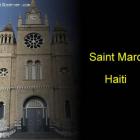ADVERTISEMENT
Haiti
Port-a-Piment Millennium Village Research Center
Port-à-Piment is a metro area, located in the Southwest Department in Haiti, part of the Coteaux Arrondissement. A serene town, it was originally developed as an unincorporated area first known as Prickly, established in 1700. Two communes comprise Port-à-Piment, Paricot and Broomsticks, and the population numbers 36,800 residents.
Port-à-Piment has a fairly well-developed infrastructure by Haitian standards. It contains more than half a dozen elementary schools, a high school, and two universities. But these institutions are run with crumbling buildings, a scant number of textbooks, and too many students to each teacher. Healthcare services could also be improved. They are provided by a single medical facility staffed by three physicians, two nurses, five medical assistants and a lab worker. A Public Health and Population Department is soon to be opened.
Port-Salut Needs more Development as Tourist Destination
In the South Department of Haiti, along its shoreline, lies the sublime beauty of Port-Salut, a hidden treasure. The town was the birth place of both former President, Jean-Bertrand Aristide, and Prime Minister, Jean-Marie Cherestal.
Although Port-Salut is considered one of the most appealing places on Haiti's tourist map to visit, it has not been developed enough to encourage more tourist dollars to be spent there. The World Tourist Development has largely ignored the potential of Port-Salut to offer more than just its sliver-sand beaches, which can be found anywhere on the island. Rather for eco-tourists to discover the rich variety of its flora- and fauna-proliferated terrain is where the town needs to head in having its unique ecology promoted. The Haitian Diaspora is starting to recognize possibly the most appealing tourist destination in the South Department. Port-Salut's cleanliness and its warm-hearted people residing there add to its attraction.
Petite Riviere de Nippes, Haiti
Petite-Rivière-de-Nippes lies in the Miragoâne Arrondissement, in the Nippes Department of Haiti with a population of 29,815 people according to a census taken in 2009. It is the most southwestern region of Haiti. The Government of Haiti's Project for Participatory Development is active as part of the Pan America Foundation. Its nearby cities are Pétion Ville, Croix Des Bouquets, and Santiago de los Caballeros and it also lies next to the Caribbean Sea shoreline. Their proximity to the sea offers a great resource to the people.
The Caribbean Shore offers rural fishing to the people of the village of Petite-Riviere-de-Nippes. This underprivileged village is about 56 miles from the capital city. The city of Petite- Riviere-de-Nippes is comprised of four components; Fond des Lianes, Cholette, Silègue and Bezin. Agriculture is the main industry even though some farmers do some fishing on smaller scales such as for personal use or to supplement their farming. They grow bananas, citrus fruits, rice, sugar cane, and cotton. Mining is also a secondary industry due to the availability of bauxite. Bauxite is clay like rock used in the creation of aluminum.
Petite Riviere de l'Artibonite
The Haitian Revolution was fought in the town of Petite Rivière de l'Artibonite from 1791 to 1804 between the Haitian and French Armies. Haiti was led by Jean-Jacques Dessalines and easily defeated the French Army lead by Rochambeau. After such brilliant heights, Haiti's Army was dissolved in 1995 due to several severe human rights abuse claims. For the Army to become official again, a vote by Parliament is required.
The Haitian President Michel Martelly is currently building an army utilizing 41 high school aged recruits who have just completed training in Ecuador. The soldiers will spend additional time training under Ecuadorean Military Engineers who will work with them in rice fields, on road repair, and other public service projects. The needs of Haiti are not protection from war or invaders but more so to rebuild the country that was devastated just three short years ago. Mechanics and engineers are needed for reconstruction.
Ouanaminthe, Haiti
Ouanaminthe Haiti is located in Northeastern Haiti and is home to about 100,000 people. Within it lays the Massacre River or Dajabon River which provides a border between the Dominican Republic and Haiti. The river is named for an incident that took place in 1728 in which 30 French Buccaneers were killed by Spanish settlers.
There are several elementary schools scattered throughout Ouanaminthe and ten secondary schools including a public school and a law school. Majority of the schools belong to churches. They support kindergarten, primary, and secondary. Students who have reached seventh grade typically move to larger areas with better educational opportunities.
A face lift to Champ-de-Mars in Port-au-Prince
Reconstruction plans for Haiti are coming along quite well as evidenced in Port-au-Prince, more specifically within Champ de Mars and the efforts should be completed by June 2014. There will be one large park which will allow the monuments already in place between locations Christophe, Dessalines and the Constitution to remain intact. It will be the largest leisure park in the capital providing families with a place to go and enjoy. There will be a beautiful garden to give pleasure to its visitors. There will be basketball and volleyball courts for the children along with a skateboard park. There will also be areas providing concessions and handmade items and crafts.
Urban project for the cities of Port-de-Paix and Jeremie
A special working session, called by the nation's Prime Minister, who also acts as Haiti's Minister of Planning and External Cooperation, Laurent Lamothe, was held recently for many hours to facilitate the special plans for the cities of Jérémie and Port-de-Paix in the country's Northwest and Grand Anse departments.
The important project is one of renewal for the two cities, which, according to the prime minister, have been neglected for far too long at 25 years. As such, the vow to do all that is necessary to upgrade the cities was made; a venture that found traction with the session's other participants. Present for the meeting were Senators, Hyppolite Mélius, Maxime Roumer, Lucas Sainvil and Andris Riché, along with the mayor of Port-de-Paix, the Minister of Public Works and the Minister Delegate in charge of Human Rights and the fight against extreme poverty.
Infrastructure works Nerette and Morne Hercule
On 27 December 2013, President Michel Martelly visited the sites of Nerette and Morne Hercule (Petion-ville). These are the two of the first rehabilitated neighborhoods reconstructed after the devastating earthquake of January 2010, under the 16/6 project.
This government project is supported by the United Nations (UNOPS, UNDP, ILO, and OIM) for rehabilitating and rebuilding 16 neighborhoods that were seriously affected by the 2010 earthquake. The project is designed in a way to facilitate 5,000 families living in six camps to find their new homes. The Haitian President was accompanied by Ms. Jolicoeur Yvanca Brutus, the Mayor of Petion-ville, representatives from UN agencies and officials from the Unit of Housing Construction and of Public Buildings (UCLBP).
The Grandeur of Pic la Selle is Worth the Trip
Pic la Selle, Haiti's highest mountain peak, measures 8,793 feet above sea level. Situated in the West Department, it is attached to the Chaîne de la Selle mountain range. The main activities of this mountainous region are hiking and camping.
To make the trip to Pic la Selle, two forms of transport will get you there: a four-by-four all terrain vehicle (ATV), or a motorbike with a driver. The bikes cost ten dollars apiece to rent, and if you want to avoid the confusion of getting lost on your way to Pic la Selle, bring a GPS device with you.
Pine forest (Foret des Pins) in Danger of Extinction
Haiti University Faculty of Law students are on a mission to save the Pine Forest of Haiti. A lush environment of stately trees and riotous wild flowers, it is in danger of becoming extinct through abandonment and misuse. The forest is a victim of deforestation, in which an ingrained habit, born of need, motivates rural residents to hew the wood to produce charcoal, so they may heat their homes and cook meals.
A non-government agency (NGA), USAID PAPH, has joined the students to produce a documentary film, which depicts them planting saplings as part of a rite to highlight their concerns about losing Pine Forest. During the program at the end of a three-day conference, attended by members of Parliament, they performed poetry readings and sang their country's national songs.
Our objective is to share with you news and information about Haiti and the people of Haiti. Traditions, habits and the way we were or grew are alive in this site. We highly recommend that you Subscribe to our Newsletter and also share with us some of the things that are memorable and made us unique people.

 Haitian Creole Translation
Haitian Creole Translation  Battle of Vertieres
Battle of Vertieres  Newsletter
Newsletter  Haitian Thanksgiving
Haitian Thanksgiving  Saint Marc, Haiti
Saint Marc, Haiti